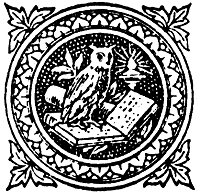Marginalia
Home
About Marginalia
Current Issue
Archived Issues
Notes to Contributors
Links to Other Online Journals
Marginalia -- The Website of the MRG
The Complete Critical Guide to Chaucer
272 pages. Routledge, 2001. �14.99.
ISBN-10: 0415202426; ISBN-13: 978-0415202428
Set out in textbook-style chapters and sub-chapters, the text begins with a concise exploration of Chaucer's 'Life and Contexts', in which Rudd summarises the vast quantity of biographies and criticism that have concentrated on Chaucer since his death in 1400. Established critics are quoted extensively to give the students a beneficial overview of scholarly opinion, and references are given for further reading. Similarly, Rudd points her readers to lines within Chaucer's canon, and each mention of a text or topic discussed in the book is accompanied by a page reference in bold type to assist a novice researcher. All teachers of Middle English will appreciate the section which details 'social, literary and historical contexts'. Rudd introduces the general fourteenth-century background including the effects of war, plague, and revolt and the influence of the church as institution. She also tackles the concepts which are inextricable from medieval literature in the popular imagination: chivalry and courtly love. The literary contexts covered extend beyond Chaucer's Middle English contemporaries to examine the crosscurrents from Italian and French vernacular texts.
The second part of the book tackles each one of Chaucer's works through sections on short verse, dream poems, non-fiction prose, Troilus and Criseyde, and collections of tales (The Legend of Good Women and The Canterbury Tales). Explanatory rather than critical, Rudd's summaries give background about form and genre as well as re-telling the 'plot' of each poem or text. While Rudd's analyses are no substitute for a student's individual engagement with the Middle English, her writing may assist young people who are struggling to make the adjustment to the language and themes of the period. Her attention to each of the short poems is especially valuable since these appealing texts are too frequently ignored.
The final section presents critical attitudes to Chaucer and his work, from references to his writing within the poems themselves through to movements in twentieth-century criticism such as New Historicism, Marxism and Gender theory. Rudd provides links to the burgeoning Chaucer 'industry' online as well as helping students find relevant biographies, manuscript and textual criticism and work on language. The book concludes with a chronology of Chaucer's life, a short bibliography and an index.
As part of the series of Routledge Guides to Literature, this work is not aimed at an audience of academics. However, its clarity and accessibility will appeal to teachers who seek a book with which to introduce twenty-first-century teenagers to the range, variety and astonishing achievement of Chaucer's canon.
Linda R. Bates, U. of Cambridge
 Previous |  Next |
�2004 The authors and the Medieval Reading Group at the University of Cambridge
No material may be reproduced without written authority.
Last modified on .
Marginalia -- MRG Website::Contact Us::About Us::Credits and Thanks::Search::Archives

